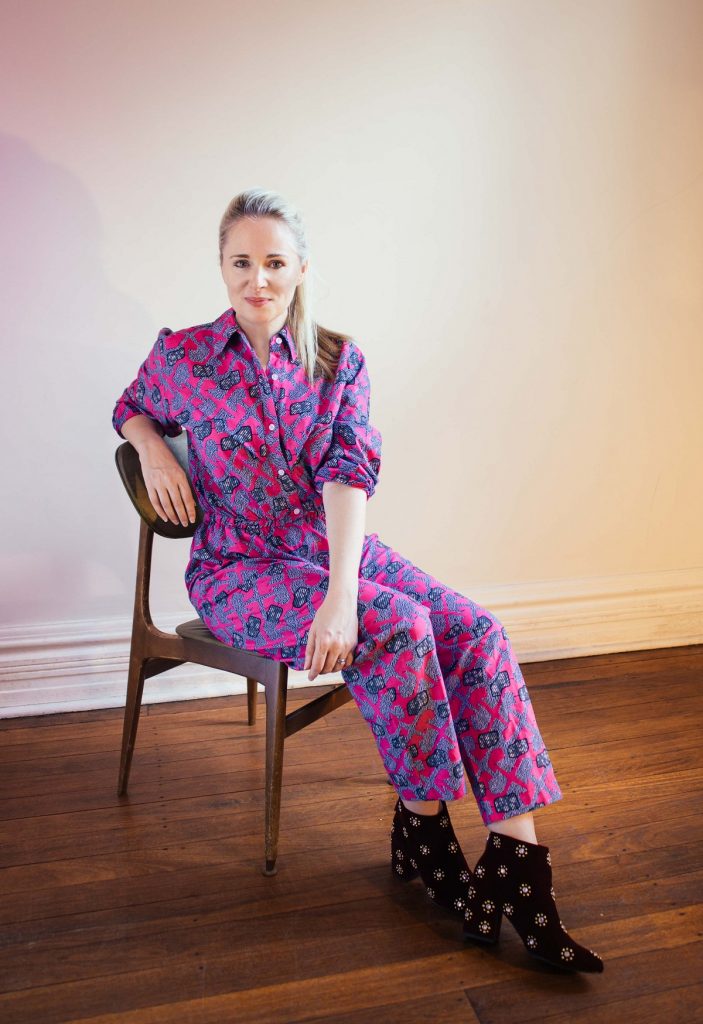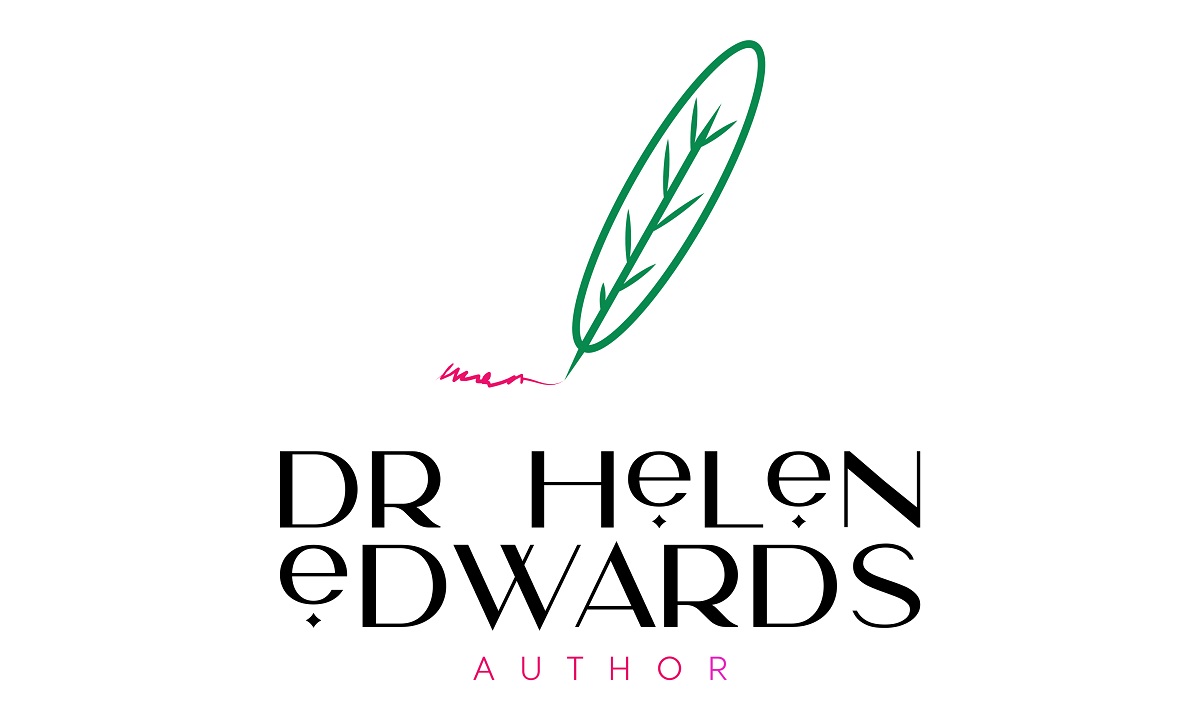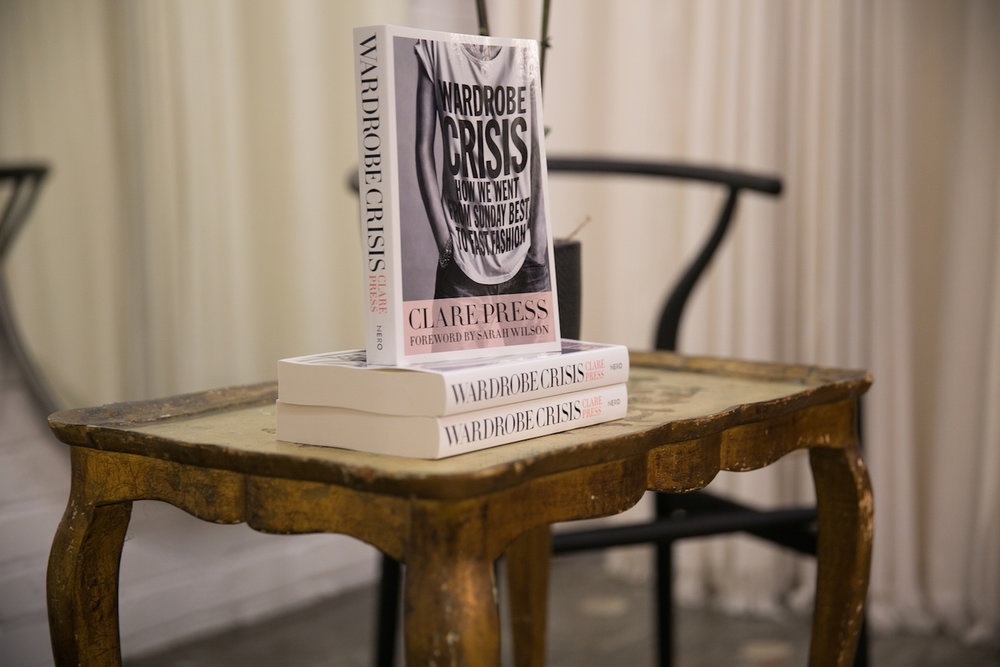Clare Press Talks Sustainable Fashion at WOMADelaide 2018

Clare Press, presenter of the Wardrobe Crisis podcast, and Vogue Australia’s Sustainability Editor-at-Large describes herself as a “vintage obsessive, and a fashion journalist, author and podcaster, with a particular focus on sustainability and the environment”. Clare tries to live and dress according to her values, choosing the eco, organic or locally produced options, and being curious about how clothes, and indeed homewares, are made, who makes them, where, how and from what.
At the Planet Talks during WOMADelaide 2018, Clare will be interviewing dynamic duo Meg and Gab from Walk Sew Good, who we recently featured. They have a fascinating story to tell. Clare says the session is a live version of the Wardrobe Crisis podcast, where she interviews all sorts of amazing people about ethical fashion, sustainability and creativity. It is going to be one of the highlights on Monday 12th March – tickets to WOMADelaide are still available – more here and at the gates. I had a chat with Clare about her journey in the fashion industry, her passion for sustainable style, and her podcast and new book – Wardrobe Crisis.
What is your history of working in fashion and style?
I’ve spent nearly 20 years working in fashion magazines in Australia, from Vogue and Harper’s Bazaar to Marie Claire, and now back to Vogue again. I’ve just been made Vogue’s first ever sustainability editor, which is exciting.
Over the years, I’ve reported from the shows in New York, London, Paris and Milan and interviewed lots of designers. I’ve also done my fair share of trends and shopping stories, but these days I look at it all through the lenses of sustainability and ethics. There’s no such thing as a truly beautiful garment that has been made in an ugly way. The good news is there are loads of designers really focusing on creating fashion responsibly and their numbers are growing every day.
Why did you start your podcast and what do you discuss?
The Wardrobe Crisis podcast is an extension of my book of the same name. I wanted to share the access I get to so many fascinating interview subjects, and this has proved a completely lovely way to do it. It’s my obsession. I really enjoy these conversations with guests and listeners. I learn new stuff constantly from producing it, and I feel like we are building a real community.
The podcast is free on iTunes. Every week, I interview leading designers, thinkers, creatives, fashion people and change-makers. A few of my guests so far: TOMS founder, Blake Mycosckie, designers like Kit Willow and Kowtow’s Gosia Piatek, mending guru Rachel Rutt, and Bangladeshi garment industry union leader Kalpona Akter. I did a beautiful interview with interior stylist Megan Morton that I think you would like – I know Megan has featured on your site. She loves a bit of vintage action! Next week’s episode features Advanced Style founder Ari Seth Cohen, and it’s a corker!
How do you see beautiful things being part of a world where we need to reduce our waste and impact on the planet?
Well, I do love beauty and beautiful things, I am not a minimalist! In fact, I am a rampant maximalist with a very cluttered house, although most of my furniture is vintage. I feel like the only new things we own are in the kitchen. I also absolutely love clothes, and can’t imagine a world in which we don’t covet beautiful things.
But I do believe we need to rethink the rate at which we consume everything – not just fashion and homewares – because the planet and Mother Nature are the most beautiful things in the world. And overconsumption is putting terrible pressures on our natural world. I advocate for shop local, rethink, repair, reuse. By all means buy things you love and will treasure, but let’s call time on the “throw-away” society, eh?
It’s not all doom and gloom – there are all sorts of people working on solutions. Right now everyone is talking about the circular economy. How can we close the loop and move from a linear system of ‘make, consume, discard’, to a circular one where waste becomes a resource?
How do you think the industry could change the way that we consume things – do you think we can create trends that are more about being sustainable, rather than the current seasonal way?
If we did still buy clothes according to the traditional four seasons, we’d be in a much more sustainable place! It’s been a long time since that system ruled. As small-scale garment manufacture dwindles in the global north, fast fashion, built on cheap labour in the south, has boomed. The ‘fast’ bit relates to the speed with which styles are rushed from the design room to the shop floor.
High fashion mostly still sticks to the traditional seasonal calendar, showing the Spring collections in September for delivery into stores around March. The carousel spins around again for Autumn, which shows in February, for August deliveries. But in the past decade or so, the Pre-collections, which cover the shoulder seasons (known as Pre-Fall and Resort or Cruise), have grown in both size and prominence. The next wave is ‘Pre-pre collections’. Makes you dizzy, doesn’t it?
In contrast, fast fashion lead times range from six weeks to a few days. Zara stores receive new styles twice a week. Did you know that as of January 2017, so much wealth was in the hands of so few people around the globe that just eight men held the same amount of riches as half of all humanity? Amancio Ortega is on that list. He is the founder of Inditex which owns ZARA. Based on CEO pay levels of some of the big brands in Australia, it would take a Bangladeshi garment worker earning the minimum wage more than, wait for it, 4,000 years to earn the what CEOs get paid in just one year.
Too often profits don’t trickle down to garment workers. This is not just a “fashion” conversation. It’s also about the clothing and textiles sold in low-price big box stores and even supermarkets. On average, offshore workers receive about 4% of the retail price of a garment sold in Australia. What does that look like in terms of wages – we’re talking about a handful of coins. Just (AUD) 39 cents an hour…..
These are complex global problems, embedded in our economic system, so I don’t have all the answers. But I do think we, as consumers, have our part to play. We can vote with our wallets to support beautifully made things and businesses that empower workers in their supply chains, and we can choose to slow down our own consumption not just of cheap clothes designed not to last but all the other stuff too – including plastic packaging – my big thing. I’m conducting my personal war on waste!
It’s such a broad term in that it can include everything from environmental stewardship and the use of sustainable fabrics (for example GOTS certified organic cotton or recycled polyester) but we also use it relation to things like supply chain transparency and garment workers’ rights. We talk about modern slavery and the need to pay a living wage in the sustainable fashion conversation, and also things like animal rights and chemical-free products.
To complicate matters, not everyone uses the term sustainable fashion – some prefer slow or responsible fashion, eco or ethical fashion! Okay, so my advice is pick the term you like – it really doesn’t matter much – and then zero in on the element that strikes the most personal chord with you. Is it animal rights or human rights or protecting the environment? It is reducing waste, embracing mending culture, or shopping locally made, or even giving up shopping? I find it helps to define your own values, then pick your passion point and start from there.
The idea of buy once buy well and knowing the history of a thing, where it comes from, who made it, what materials are used – is a key aspect to more sustainable interiors that I write regularly about- is this also an important aspect of sustainable fashion?
I am so excited to hear that, because it’s exactly how I approach fashion. Also, I often wonder how far along the conversation is around sustainability when it comes to interiors. Personally my tastes are World of Interiors, eclectic, and a little strange, and dusty! I like things with stories. I have no interest in a brand new shiny white thing. But whatever your tastes – and sustainability has nothing to do with taste! – I think storytelling is key to fostering a connection with our stuff. And when you connect to something you are more likely to value it.
Vintage has always been part of my life and most of my fashion and home is vintage – it is a massive part of sustainable homes – where is the fashion industry at when it comes to vintage and is vintage fashion becoming more mainstream?
While the fashion industry – being concerned with the production, marketing and sales of new garments – mostly doesn’t engage with vintage on direct level, I have yet to meet anyone working in fashion on the creative side who isn’t inspired by vintage objects, garments, design and style. In my own case, I’m vintage obsessed – I collect (and read) vintage books, and I went through a phase of buying characterful old furniture and pictures from auction houses, but that habit was unsustainable – our walls and floors are a finite resource!
What are you looking forward to the most at Womad?
Jim Robbins, author of The Wonder of Birds is speaking at the Planet Talks – I can’t wait to hear from him. Tim Flannery is also speaking there on the Saturday, he is fascinating. I interviewed him about climate change and the Great Barrier Reef for the March issue of Vogue Australia – on stands now!
Where can people find you and your work?
Instagram is my favourite form of social media, follow me @mrspress
I can not wait to hear Clare and all of the line up at the Planet Talks. It is such a beautiful way to immerse yourself in creative and passionate thinking, whilst you stroll amongst the tall trees of Botanic Park, and dance to the sounds of the planet. See you there! Find Clare on her website, podcast and book and probably scouring dusty op shops for vintage books!
Helen
xx
photographer, Georgia Blackie


![[prawn trousers!] In Saaki shirt and Yevu prawn-print trousers. Yevu is a socially responsible label made in Ghana](https://www.sustainablehomehub.com/wp-content/uploads/2018/03/ClarePress-0026.jpg)

Fabulous interview. So good to see the idea of ethical clothing and sustainability at this level. Who would have thought that Vogue would take up this baton! Clare seems like an interesting woman with strong values and a clear understanding of what needs to change.
she is doing wonderful work!